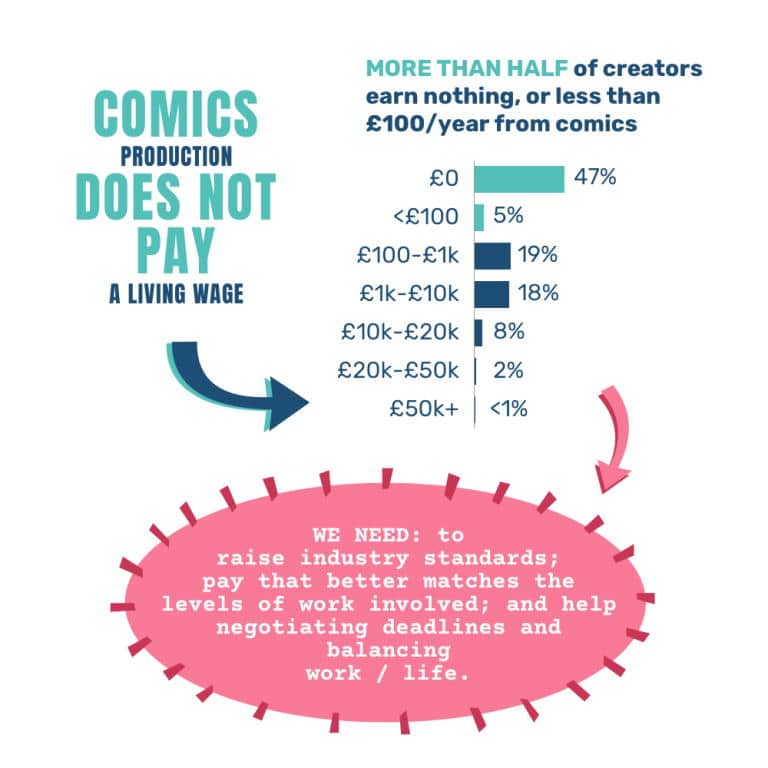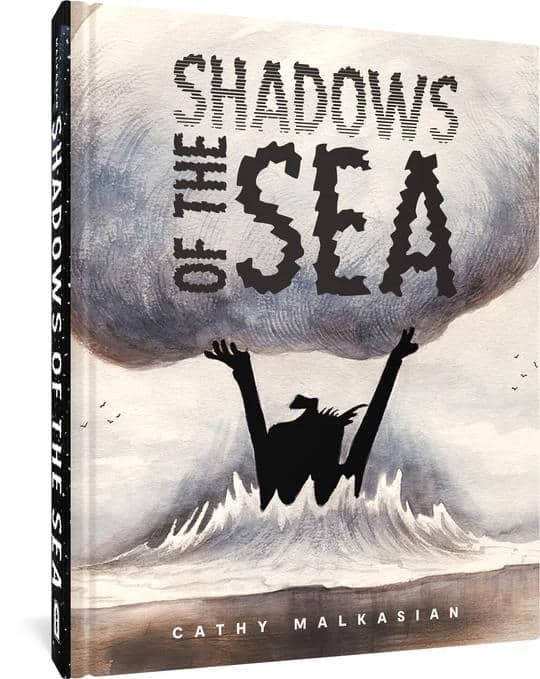I write a version of this post every couple of years or so. The one about comic book page rates and how they never seem to go up that much.
The crazy thing is that no matter how much time elapses, the rates stay the same and lose more and more value.
Let’s say 20 years ago the rate for a page of pencils was $150. People still get paid that. Using this inflation calculator, $150 in 2005 would be $240.93 in 2024. That’s how much earning power comics makers have lost.
A couple of things brought this topic to my mind of late. One was actually a one year old post from former DC publisher Paul Levitz on FB that somehow was getting circulated again. Levitz had a similar epiphany to mine.
A post about the current pressure on comic book page rates (at least in the periodical side) got me playing with an inflation calculator. The top rates at DC and Marvel when I came into the business in the early ‘70s are very roughly equivalent to $700 per page now(script, art, lettering and coloring inclusive) with starting rates about half that. No royalties of course. And I’m not adjusting for the technological changes that make lettering and coloring so different.
Just an interesting factoid.
No idea why the post was showing up in my feed, but the comments were more recent anecdata backing up the decline in income:
John Rozum: My page rate at DC after being stagnant for 20 years, went down a few years ago. When I started at Milestone in the mid 1990s, I made about half of what I would be five years later, but felt like I had a ton of money. My bank apparently did too because I remember one of the clerks asking me what I did for a living. Now, my higher page rate would make me poor.
Nat Gertler: Last freelance comics I wrote, I negotiated up from less than a third of my 1992 DC page rate (unadjusted) to less than half… at which point they stopped wanting me to write.
Colleen Doran, another frequent and very wise writer about the business of comics, had a newsletter this week entitled “About Those Page Rates – They’re Terrible, generally.”
You really should read the whole thing (and subscribe) and Doran is talking specifically about how bad rates are for indie comics, but recognizes that young creators will want to get their start somewhere and accept low page rates. But just a sample:
Kickstarter braggadocio makes for nice publicity for these small presses, but the creators aren’t really getting much out of it, and they don’t even know it. Perhaps some of them are happy working for minimum wage, but in truth, they are working for even less money, when adjusted for inflation, than indie publishers paid back in the 1980’s. Indie companies paid a low of around $25 per page for a single task like penciling. I was being paid a crappy $50 per page for story and art. But I wasn’t lettering or coloring that art.
$50 a page when I started out is worth over $200 now. I got $65 a page for pencils. when I first went to Marvel and DC
Most small presses don’t pay $200 a page today. And adjusted for inflation they sure don’t pay $250 a page for pencils alone.
Yeah.
Periodic efforts to quantify page rates have been made. There was Fair Page Rates back in 2016 – totally out of date – and more recently Creator Resources from June 2023. The rates are eerily similar. The latter survey lists DC as paying $150 a page for pencils, but Doran notes that she and other more established pros didn’t fill out the survey and their rates are considerably higher.
Over in the UK, Comics Laureate Hannah Berry and some colleagues have been working on the 2025 edition of the UK Comics Creators Survey. This is more about general working conditions, but includes some income data. According to the previous 2020 survey only 3% of the respondents made more than £20,000 a year from making comics.
Now, there are many ways to make money from making comics that do not involve page rates. David Harper has a recent feature on the state of the comic strip, and he hailed that state as a golden age. The piece quite rightly focused on the creative side of things, but some mention of monetization was made:
You can’t just be a cartoonist anymore. You must be an entrepreneur. And the answers on that side of the job are different for everyone.
That’s reflected in the different ways cartoonists monetize their work. Some tactics show up more than others. Barkman, Craig, and Fishman do well by selling prints of their most popular strips. Barkman and Fishman self-publish collections of their work. Patreon and merch are staples, as they provide fans easy ways to show their support. Other tactics are more single-threaded, though. Andersen relies on advances from book deals, something others don’t necessarily share. The visibility of Beetle Moses has helped Fishman pick up illustration jobs for NFL teams like the Atlanta Falcons and Seattle Seahawks.
There’s no one way to monetize your comic strips. That makes it difficult to determine the right way. It also isn’t what they’re trained to do. Like Andersen said, she went to art school, not business school. Everyone is doing their best to guess their way through. And that lack of a clear path means it’s important to find your own answers as you turn this into a job.
Now, as in the past, compact collections of short comic strips that make people laugh can be extremely successful. I don’t see the BookScan numbers any more, but Nathan Pyle and Sarah Anderson surely make a decent living from their strips and books. But they have to work at it. Instagram alone doesn’t actually pay for views, so even having 500,000 followers won’t pay anything – Anderson has 4.2 million IG followers, Pyle 6.2 million – but add in merch, book sales, Patreon, etc it adds up. But it’s also not making money from just publishing your comics. As Harper points out, it’s all ancillary income.
Will typical comic book page rates ever go up for “journeyperson” creators – not the superstars but the regular folks who get the work done well but aren’t “household names”. Possibly? There’s a pretty strong correlation between high quality work and strong fan support. It’s so obvious that I feel stupid pointing this out. Yet it’s well known that Marvel cut its rates a few years back, and a lot of established creators left because they wouldn’t take pay cuts. These creators have been slowly coming back, hopefully with better rates.
But as long as talented people will take crappy rates….publishers will keep offering them. I dunno, it’s all a big complicated system of pulleys and chains, like a Rube Goldberg drawing.
Every time I write one of these stories about stagnating page rates, I also include a sad story of someone who has given up. This time it’s Cathy Malkasian, the Eisner Award winning creator of Percy Gloom, Eartha, and the just released Shadows of the Sea. Malkasian is a wonderful cartoonist whose work is challenging, dark, and insightful. It’s the reason why I love indie comics the most, all these unique individual voices telling stories you can’t experience any where else. But selling that kind of material is tough, and n her website Malkesian sounds like she’s packing it in.
To any real humans who visit this site,
Just letting you know that I’m leaving comics. SHADOWS OF THE SEA is my last published work. It’s been a good run.
Making comics is a very labor-intensive and vulnerable experience, and I’m not up for all that work and vulnerability anymore. It doesn’t make sense to pour my heart out, suffer muscle aches and worsening vision, while sales and reactions dwindle…
Still, over the years I’ve heard from people the world over, and that has given me a glimpse of where my work has landed. I’m so grateful for the reach my publisher has afforded it.
But the last thing I want to be is a drain on my publisher’s resources.
The only thing that matters in our new economy is monetized attention. This is a problem if you’re an artist who needs time to think about things. I’ve never made money doing this. If anything, I’ve lost money, which is probably the definition of a labor of love.
But even love has its limits.
To anyone who’s read my stuff, THANK YOU. I really appreciate you taking the time. To those of you who’ve written to me over the years, not asking for favors but just connecting, THANK YOU. I’ve really appreciated your appreciation of my work.
And…I hope you’ve been entertained.
It’s a sad read. I don’t think indie cartoonists can be guaranteed a living or an audience any more than indie musicians or indie filmmakers can, but they are the ones making the magic, and everyone’s threshold for sticking it out will be different
Malkasian’s work isn’t for everyone….but it is for someone.
I sat down to write this not quite sure where it would end up, so I’ll finish with the blurb for Shadows of the Sea:
On the lonely road meet two outcasts — Doris, a small but spitfire woman and Stanwick, a shy and sensitive dog. Each of this unlikely pair harbors grief, and must decide whether to stay with the pain or run from it. On their journey, the two travel through lush forests, to the eerily abandoned town of echoes, clear to the “mudder” sea, where they finally confront the unbearable trauma of their pasts.
Cartoonist Cathy Malkasian’s graphic novels are known to be crafted with layered, affecting allegory and metaphor, and Shadows of the Sea is no exception. In this story, shadows become characters themselves, weighed down with painful truth. They cannot be released until their owners acknowledge, reflect, and heal. Charged by the magic of the “mudder” sea, the shadows reveal the loss Doris and Stanwick have been carrying — a husband and a child — and sets them free at last.
While this doesn’t exactly sound like a beachside read, it does sound like something people should experience. You can order a copy from your local comics shop or via Bookshop.org.















Some rough thoughts on what can be done:
The go-to idea is often a union. While I support this, it would be difficult. My understanding of labor law is that a freelance union would not receive any of the rights guaranteed to unions by the National Labor Relations Act, meaning that the companies could legally fire anyone solely for joining, they don’t have to negotiate in good faith, and most unfair labor practices couldn’t be taken to the Board for adjudication. Something like the PRO Act that was proposed under Biden could change that by reclassifying freelance workers. Short of that, a union would require near total buy in from both the editors that hire people and the big name talent that have some actual sway because of their audiences.
Another proposal, perhaps equally unlikely in the current government but with some precedent in other countries would be a governmental grant for independent comic publishers provided they give a certain pay rate. In theory, this could help raise the floor for all comics because the bigger publishers would want to compete.
Similarly, there was an article a few years ago about France giving teenagers 300 euros to spend on “culture,” and a lot of the money was spent on manga. This might not directly lead to increased wages for the workers, but could help buoy some of the smaller publishers and series.
Intriguing thoughts, I like all of the ideas you give, spikestonehand.
The union point and all its complexities is still a path forward, albeit now less promising than when I covered it in my article for the Cartoonist Cooperative’s Journal a couple years ago. Although I argued there are paths for freelance unions, given the at the time Biden admin’s labor friendly moves, I also focused on how guilds like in the movie/entertainment industry also provide an option similar to unions.
Check it out if interested!
https://cartoonist.coop/journal/the-cost-of-comics-a-history-of-the-comic-book-labor-movement-part-one/
https://cartoonist.coop/journal/the-cost-of-comics-a-history-of-the-comic-book-labor-movement-part-two/
My two-cents as an indie publisher. Our page rates are low, admittedly, but they have to be or else we would never cover costs. Our latest project just ended on Kickstarter. We made $6500. Kickstarter will take almost 1k of that, leaving $5500. Printing and shipping will cost another 1.5k. That leaves 4k. Our production cost was 4.5k (writer, artist, colorist, letterer). I’m down $500 bucks before i hit the DM.
Now we will overprint so when we hit the DM i’ll probably make $1k. But minus the $500 in the hole, that means i made a total profit of…$500. There are online sales, direct to retail, digital and of course future Kickstarters where that overprint will save me $$ down the line but…we ain’t making a living either here.
Now, we are growing, and that’s an awesome thing, but the idea that you have to be an entrepreneur is accurate. I supplement the capitol needed to run a publishing company with my Web Design business. Without it…i’m not a publisher.
Obviously this is different than Marvel or DC, but sales of comics aren’t what they used to be because of many obvious factors. Wages can’t rise if the publishers aren’t making money either. I can’t necessarily speak for the big two, but it’s simple economics isn’t it?
Totally the same with music and filmmaking and theatre. Comics I’ve always just been a reader but the other three I do and the parallels are very relatable! To the previous commenter’s point, it really does feel like market forces alone aren’t going to make any appreciable difference. It has to be people, government and society putting a value on these arts and artists. The same way we subsidize food grown on farms because we think it’s important to do so.
Man, fuck capitalism
Page rates are abysmal!
For my last two projects on a major license for the same corporate publisher, I asked for triple what they were willing to offer me. I provided good justification for my requests, and the truth is that the rates I asked for STILL wouldn’t equate to minimum wage, they were just the absolute bottom level of fair compensation for time spent.
For one of those projects, I never received a single comp copy despite chasing them up for months. If they’d offered to send me 100 copies of the book, I wouldn’t even mind the horrible rate. At least I can do something with those! But I have to buy copies of my own work from the distributor, which just seems totally bonkers to me.
I love making comics but the business of comics continually threatens to break me.
Comments are closed.